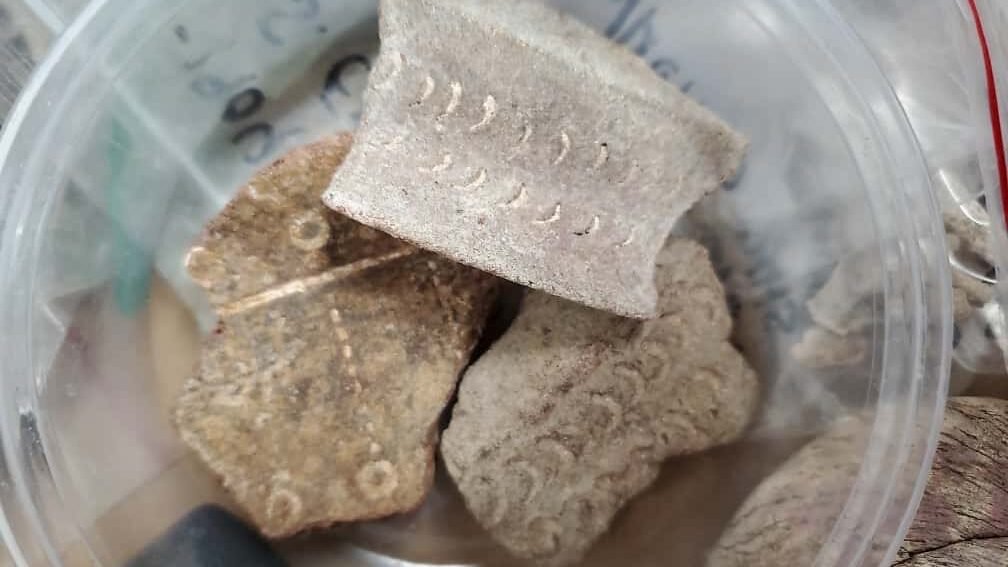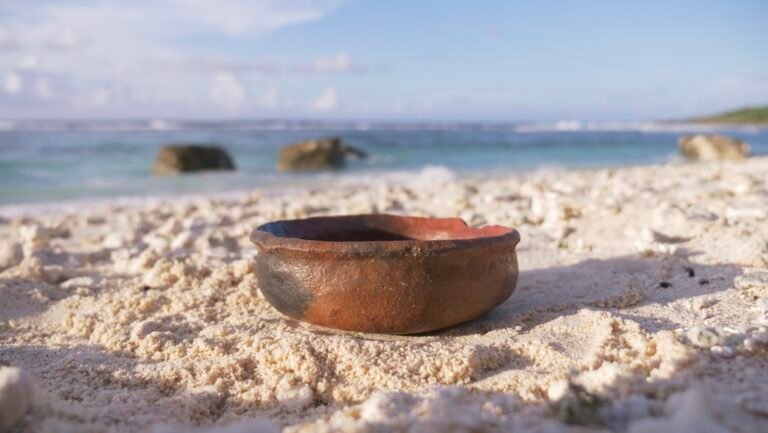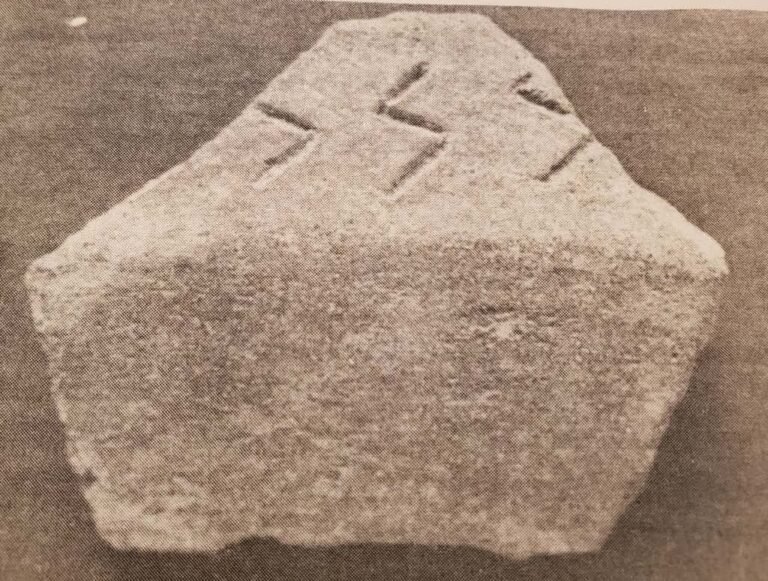Origins and Development of Chamorro Pottery and Early Calcareous Ware in the Marianas
The ceramic tradition of the indigenous Chamorro people of the Mariana Islands is rooted in a distinctive and complex lineage of craft and culture. This lineage begins with what archaeologists term Early Calcareous Ware (formerly Marianas Redware), a thin‑walled, red‑slipped, finely decorated pottery tradition that appears in the Marianas soon after initial settlement. This article traces the origins, manufacturing practices, social contexts and enduring legacy of that tradition, then connects the past to the present‑day revival of Chamorro pottery by contemporary creators.
Origins and Settlement
The Mariana Islands, including present‑day Saipan, Tinian, Rota and Guam, were settled early in the western Pacific, perhaps around 1500 BC. Hung, Carson and Bellwood (2011) argue that pottery with red slip and stamp/punctate decoration appears in the Marianas around 1500‑1400 BC, in locations such as Unai Bapot on Saipan and Ritidian on Guam. These earliest ceramics are recognized as the first component of what became Early Calcareous Ware (formerly Marianas Redware), and reflect long‑distance connection with Island Southeast Asia.
The designation “Early Calcareous Ware” derives from the frequent use of calcareous sand temper and red slip, hence the former name “Marianas Redware” which now gives way to the more descriptive term (Graves, 1990).
Technology, Form and Decoration
Early Calcareous Ware vessels tend to have thin walls (2‑4 mm), red‑slipped surfaces and decoration consisting of incised, stamped or punctated motifs. Butler’s work shows small to medium everted rim jars and simple hemispherical bowls dominate the earliest layers. The temper often includes calcareous beach sand, a hallmark of the tradition (Graves, 1990).
Decoration frequently incorporates circle‑stamped motifs, linear incisions and punctate fields filled with lime or pigment. Such elaborate ornamentation may reflect social signaling, identity or ritual functions — though the exact meaning remains uncertain given the limited record and loss of cultural practices during Spanish colonization. For example, the decorated ware from the House of Taga site on Tinian illustrates high craftsmanship (Carson, 2012).
Chronology and Transformation
The sequence established by radiocarbon dates places early red‑slipped, thin‑walled forms at 1732‑1560 BC at Unai Bapot, and 1547‑1323 BC at Ritidian (Carson, 2012). Initially, vessel forms and decoration are relatively homogeneous across the archipelago, suggesting a widely shared tradition. But by around AD 1000‑1200, this unity begins to lessen, and regional variation increases (Graves, 1990; Moore, quoted in Graves et al.).
This transition coincides with the coming of the Latte period (ca. AD 800/900 onwards), and the rise of distinctive architectural features such as latte‑stones. The pottery production shifts to thicker‑walled vessels, less slip, and greater functional forms for boiling and storage (as the nutrient/food systems evolve) (Moore, 1983; Butler, 1990).
Social and Cultural Interpretations
Given the technical and stylistic sophistication of Early Calcareous Ware, several interpretations emerge about its social role. The high‑quality red‑slipped decorated vessels may have been prestige goods, used in ceremonies or exchanged between island groups. Graves, Hunt & Moore (1990) argue the variability in temper, surface treatment and clay sources indicates both continuity of local craft and increasing social complexity over time.
However, this interpretive link remains tentative: while ceramic style suggests identity and exchange networks, direct evidence for ritual use or status differentiation in early Marianas pottery is limited. Thus, any claims about its symbolic role must be qualified.
Regional divergence after AD 1000 likewise mirrors changes in settlement size, resource exploitation and inter‑island interaction. On Saipan and Tinian, for instance, diversification in vessel rim forms and surface finish suggests adaptation to local resources or social organization (Graves, 1990).
Continuity, Decline and Legacy
The Early Calcareous Ware tradition did not vanish overnight; instead, it evolved into later pottery types, including the so‑called Marianas Plain ware, and ultimately the ceramic forms that came into historic period contact with Europeans (Graves, 1990; Carson, 2012). Although the advent of metal tools and colonial disruptions after 1521 AD changed many craft technologies, the legacy of this ceramic tradition persists in cultural memory and ancient material heritage among the Chamorro people.
From Archaeology to Revival: Connecting the Past to the Present
Today, initiatives to revive Chamorro pottery draw directly on the legacy of Early Calcareous Ware. Contemporary artisans use archaeological findings along with experimentation to determine the clay sourcing, tempering, forming and finishing techniques of the ancient vessels described above, while embedding cultural meaning and community engagement in their work. By understanding how the early builders of pottery in the Marianas crafted, exchanged and used these vessels, modern makers both honor the past and re‑imagine tradition for the future.
As this revival grows, the story of Chamorro Pottery becomes not just one of archaeology, but one of living cultural resurgence, reinterpretation and creativity.
References
Carson, M. T. (2012). History of archaeological study in the Mariana Islands. Micronesica, 42(1/2), 312–371.
Carson, M. T., Hung, H.‑C., & Bellwood, P. (2011). The first settlement of Remote Oceania: The Philippines to the Marianas. Antiquity, 85(329), 909‑926.
Fitzpatrick, S. M. (2013). Estimating trajectories of colonisation to the Mariana Islands. Antiquity, 87, 337‑351.
Graves, M. W., Hunt, T. L., & Moore, D. (1990). Ceramic production in the Mariana Islands: Explaining change and diversity in prehistoric interaction and exchange. Asian Perspectives, 29(2), 212‑231.
Hunt, T. L. (1990). Ceramic variation in the Mariana Islands: Its dimensions and implications. Asian Perspectives, 29(2), 212‑231.
Kelly, M. C. S. (2022). A comparison of pottery assemblages from the northern Philippines and the Marianas. Journal of Archaeological Science: Reports.
Takayama, J., & Intoh, M. (1976). Archaeological excavation of Latte site (M‑13), Rota, in the Marianas. Reports of the Pacific Archaeological Survey, 4.



